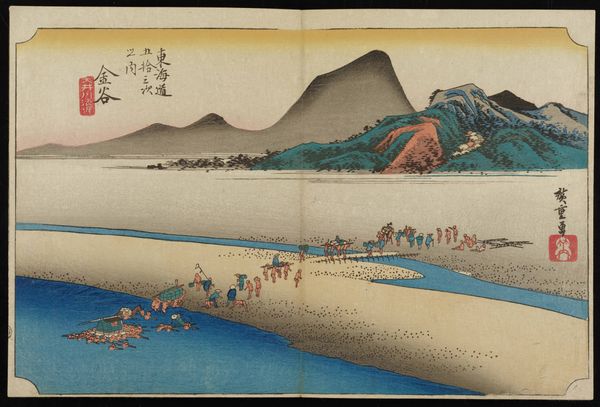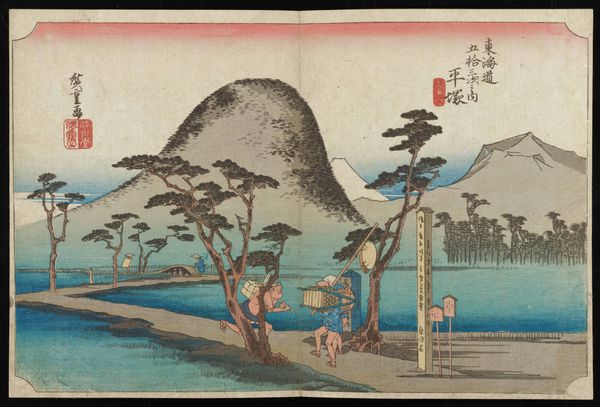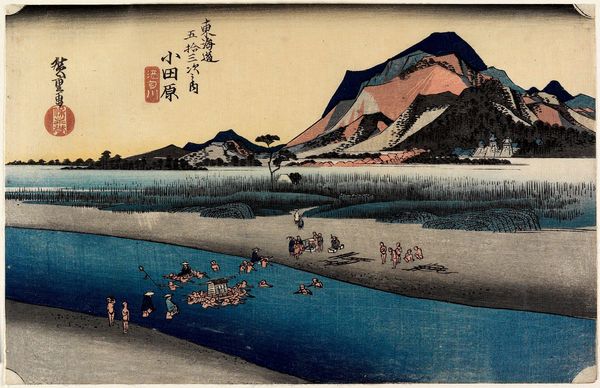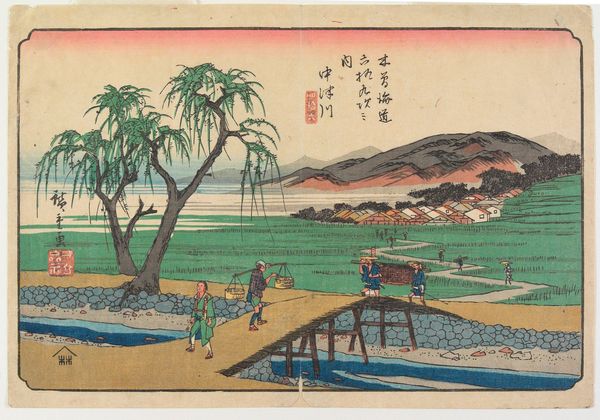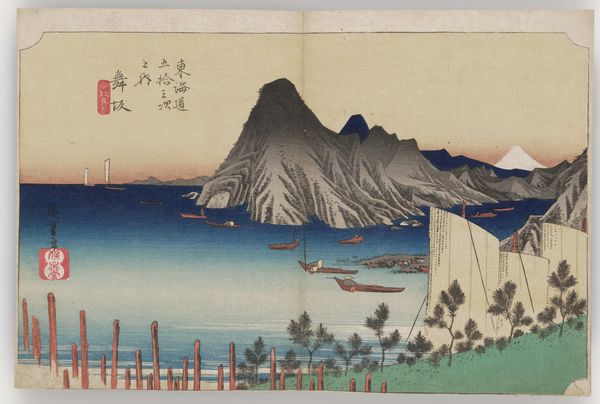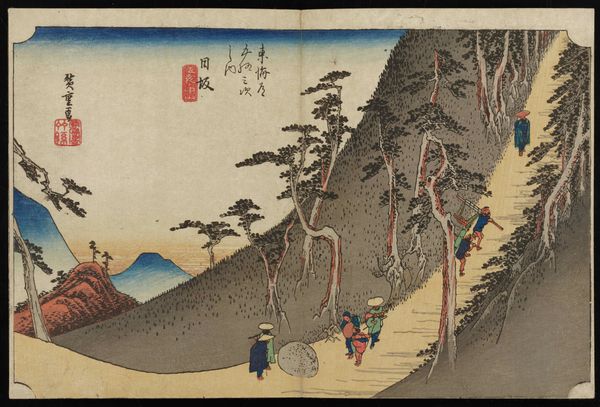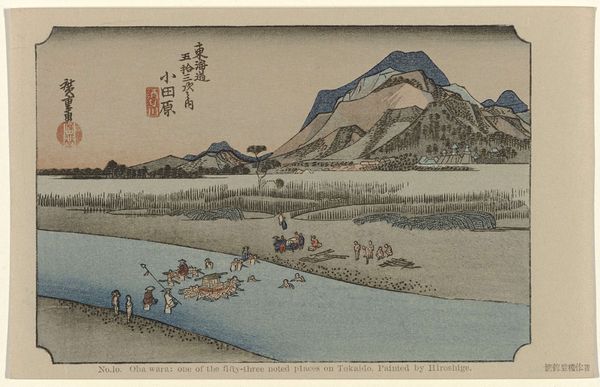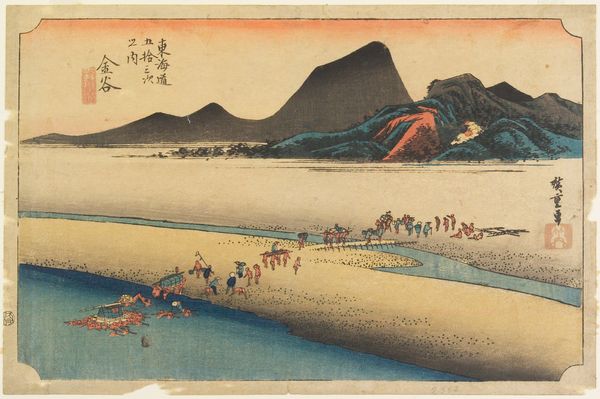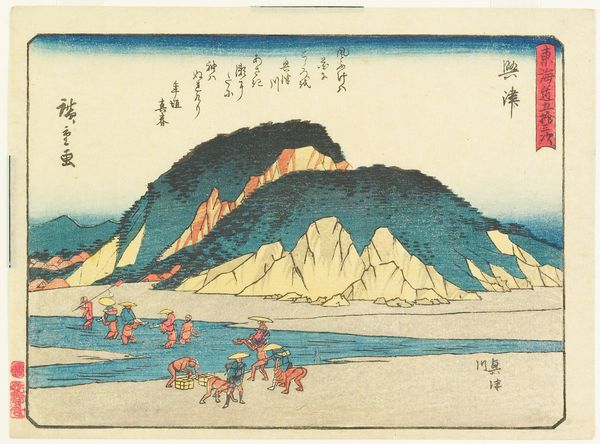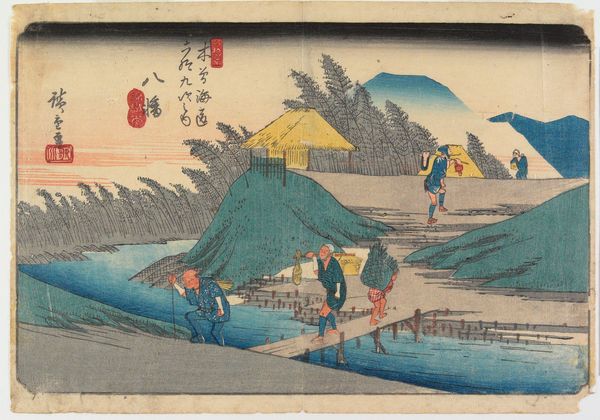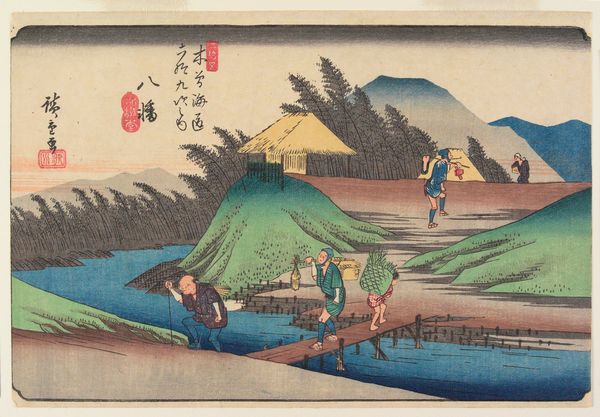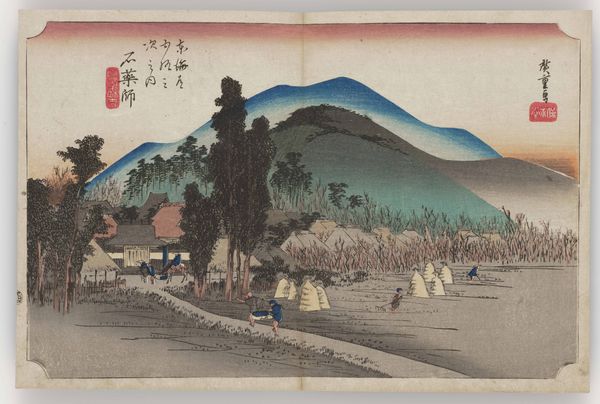
print, paper, ink, woodblock-print, pencil
# print
#
asian-art
#
landscape
#
ukiyo-e
#
paper
#
ink
#
coloured pencil
#
woodblock-print
#
pencil
#
orientalism
Dimensions: 9 1/2 × 14 1/4 in. (24.13 × 36.2 cm) (sheet, horizontal ōban)
Copyright: Public Domain
Curator: Before us, we have Utagawa Hiroshige's woodblock print, "Odawara--Sakawa River," dating back to approximately 1832-1833. It's part of the 'Fifty-three Stations of the Tōkaidō' series. Editor: What strikes me first is the unusual pastel color palette and the dynamic composition, how the sharp diagonal of the river cuts across the scene, drawing the eye towards that majestic mountain range in the distance. Curator: Absolutely. This work, like others in the series, offers more than just a picturesque landscape; it’s a social document, reflecting the experience of travelers and the economic activity around the Tōkaidō road. The figures fording the river are not merely incidental. Their labor and interaction within that space reveal critical elements of Tokugawa society. Editor: Agreed. I'm particularly drawn to how Hiroshige uses line and color to differentiate planes—the foreground feels active and bustling, almost tactile in contrast with the softer, muted background that is almost ethereal. The curve of the river almost acts as a stage curtain to show this contrast in experience and affect between these plains. Curator: Furthermore, considering Hiroshige's status as a commoner in the rigidly structured Edo period, these depictions provide invaluable insight into the lives and work of ordinary people, an often overlooked perspective in art history dominated by elite narratives. Editor: The flattening of perspective, too, invites analysis. It might seem simplistic, but it’s a deliberate artistic choice that reinforces the print’s surface and challenges Western notions of realism. You could explore this through semiotic theory and question how we can ever assume the "real". Curator: Exactly. It moves past objective representation and functions to elicit critical thought around identity, experience and landscape, both in that period and extending to contemporary audiences engaging with traditional woodblock prints like this one in the Minneapolis Institute of Art collection. It challenges the often romanticised lens through which we tend to observe cultural heritage. Editor: Indeed. Viewing it through a formalist lens shows just how cleverly and intentionally he captured a certain feeling and place so elegantly, despite the apparent simplicity of method. Curator: Ultimately, "Odawara--Sakawa River" presents not just a scenic route, but a space infused with historical meaning and lived experience for those crossing the Tōkaidō road. Editor: And for me, an exceptional and artful orchestration of form and color that invites a deeper contemplation into the building blocks of an image and its power.
